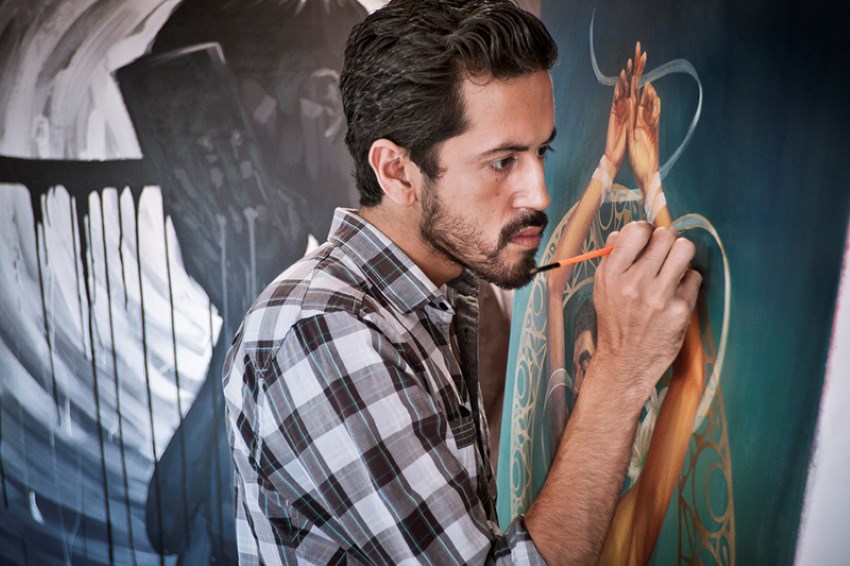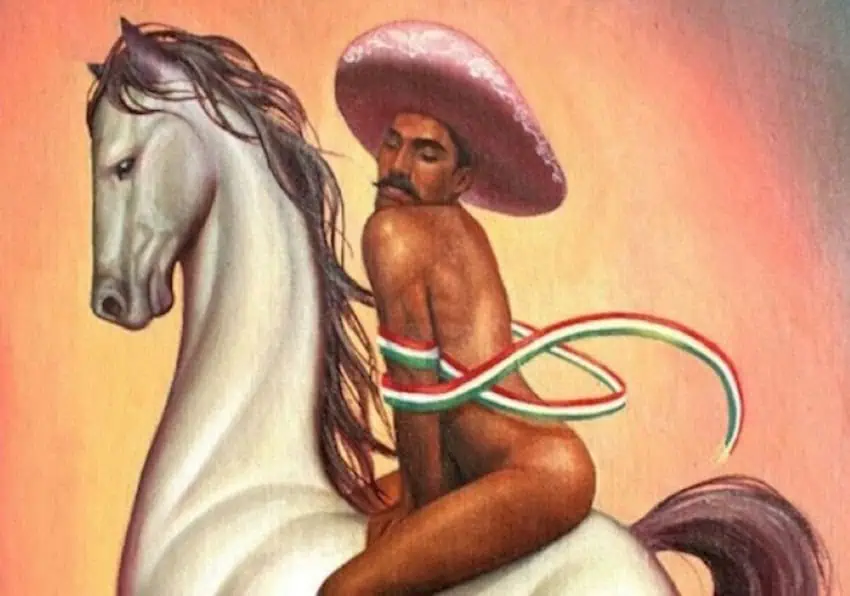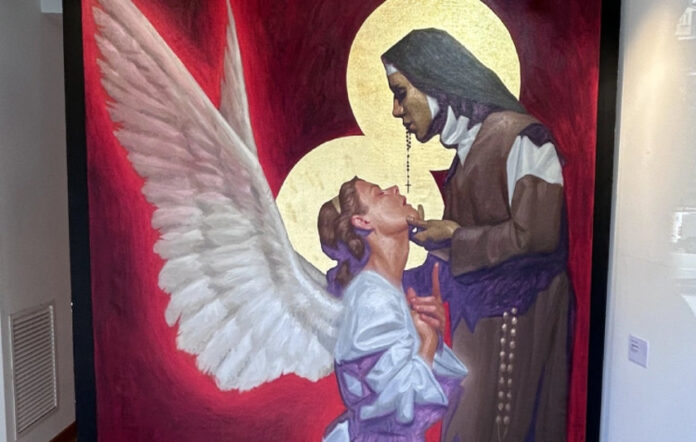Fabián Cháirez, the artist behind a controversial 2019 painting of a nude Emiliano Zapata wearing high heels and a pink sombrero atop a horse, is once again making waves in Mexico City.
Cháirez’s latest exhibition, “La venida del Señor” (“The Coming of the Lord”), opened Wednesday at the Academia de San Carlos as part of the capital’s annual Art Week. It is scheduled to run through March 7.

Fusing eroticism and sacred iconography, the nine large-scale oil paintings depict Catholic figures such as angels, nuns and cardinals in intimate and ecstatic interactions.
Cháirez, 37, who is queer, is known for exploring themes of gender, sexuality and the deconstruction of traditional masculinity — particularly within Mexican and Latin American cultural contexts. His newest series is more of the same.
“I use religious images and characters from the Catholic imagination to make a comparison between religious ecstasy and sexual ecstasy,” Cháirez said at the exhibit’s opening.
Originally from Tuxtla Gutiérrez, Chiapas, Cháirez first garnered national attention in 2019 with his portrait “La revolución,” which depicts Mexican Revolution hero Zapata in a traditionally feminine pose atop a horse with a prominent penis.
Displayed at the Palacio de Bellas Artes in Mexico City, the piece sparked public debate and protests.
In one instance, about 200 farmers stormed the venue to demand the painting’s removal; in another, Zapata’s outraged descendants said they would sue the painter, the Ministry of Culture and the Palacio de Bellas Artes (Palace of Fine Arts); and in another instance, members of the LGBTQ+ community dressed up as female Zapatas and rallied in support of Cháirez.

At the time, Zapata’s grandson, Jorge Zapata González, said that the painting “denigrates the figure of the general” and is harmful to the image of Mexican heroes.
Now, with “The Coming of the Lord,” Cháirez continues to push boundaries.
“Its intention is not to generate controversy, per se, but to open a space for discussion about how symbols can be reinterpreted to include voices that have historically been silenced,” he told the newspaper Milenio.
One of the paintings in the series features two males dressed in traditional Catholic cardinal attire, holding and licking a lit Paschal candle (a symbol that often represents the resurrection of Christ, light and hope). In another, two nuns are intimately touching their heads together with ambiguous but perhaps amorous facial expressions.
Cháirez said the inspiration for the series came from classical religious artworks such as Gian Lorenzo Bernini’s “The Ecstasy of Saint Teresa,” Fra Angelico’s “The Annunciation” and El Greco’s “The Immaculate Conception.”
Cháirez originally explored these themes in 2018 with commissioned paintings for the LGBTQ+ bar La Purísima in Mexico City.
His work later caught the attention of European galleries, leading to an exhibition in Barcelona.
His current exhibit coincides with Mexico City’s annual Art Week, a major cultural event that opened Wednesday and will conclude Sunday.
At the opening for “The Coming of the Lord,” Cháirez pulled on an arm-length, black, plastic opera glove and black plastic head mask with eye and mouth holes to pose for pictures alongside his works — “in order to generate greater mystery,” Milenio wrote.
For his part, Cháirez — whose family took him to church in an attempt to change his sexual orientation after he came out to them — embraces the discussion his works generate.
Cháirez is originally from Tuxtla Gutiérrez, Chiapas.
“I would love for the public to question the roles imposed within society,” he said. “I hope that they approach my work with a critical eye,” he said.
He said a premise for his new series was exploring how “to make erotic portraits without stripping the Catholic characters of their habits and clothes — something that is usually common when making an erotic portrait,” he said.
He added that he posted photos of his new works on social media — in an attempt to “play with censorship.”
“As much as people tried to censor my pieces, they couldn’t. So the truth is, this shows that, in the end, morality and eroticism are things that are in the mind.”
“The Coming of the Lord” will be on display through March 7 at the 245-year-old Academia de San Carlos, about three blocks from the Zócalo plaza in downtown CDMX. Admission is free.
The artist plans to offer guided tours, providing insights into his creative process. He will disclose the date(s) and time(s) on Instagram and/or Facebook.
With reports from Milenio and Chilango.com
